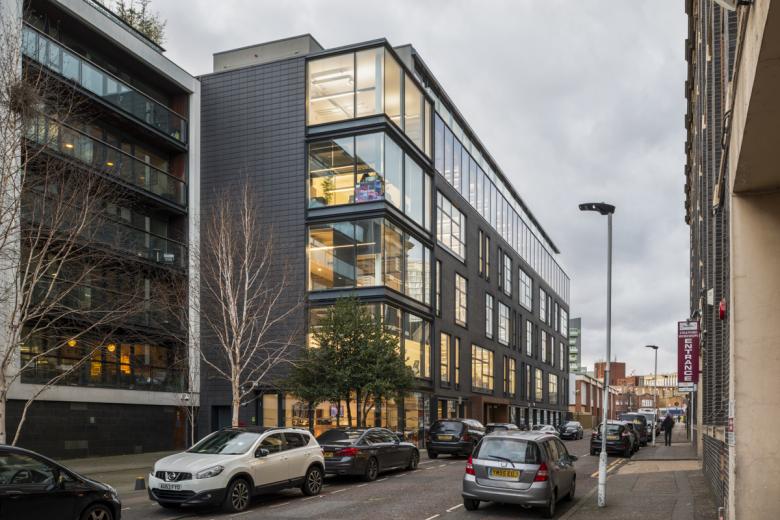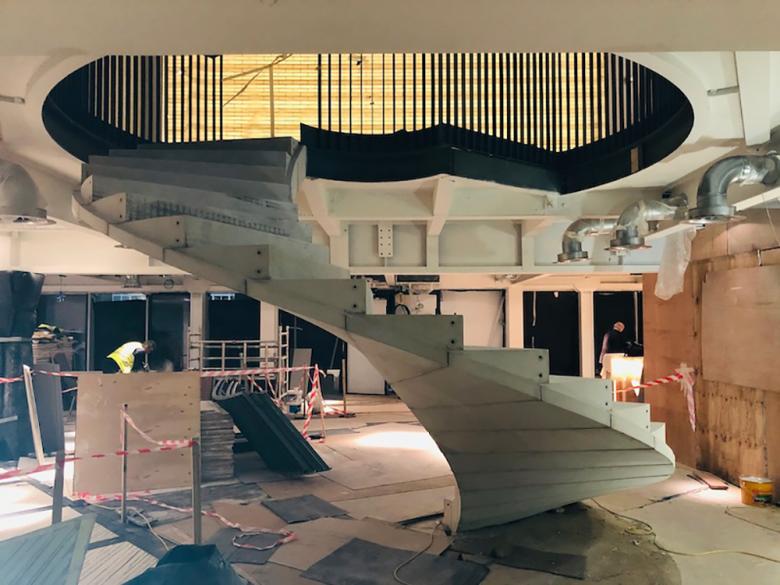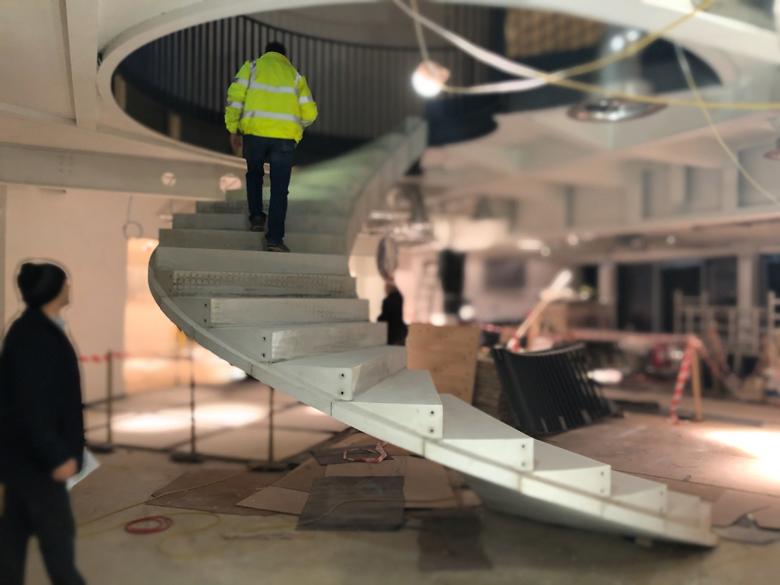A Sweeping, Self-Supporting Staircase
Punctuating the entrance of the newest Us&Co co-working location in London is a helical staircase designed by Stamos Yeoh Architects with a bevy of consultants. Here we take a closer look at how this unique stair was built.
Location: 11 Burford Road, Stratford, London
Client: Us&Co
Lead Designer: Stamos Yeoh Architects
M&E Engineer: Tate Consulting
Structural Engineers: MLM Group (previously Fluid Structures), Walsh Structural Engineers
Post-Tensioning: Praeter Engineering
Precast Tread Fabrication: Milbank Concrete
Main Contractor: John Cirmaci Builders
Project Size: 4500 m2
The six-story building at 11 Burford Road in East London's Stratford district is the newest location for Us&Co, a company providing co-working spaces in London and Dublin. The location offers 30,000 square feet of private offices, hot desks, and meeting rooms, among other spaces spanning six loft-like floors. The most unique aspect of Stamos Yeoh Architects' design for 11 Burford Road is the helical stair that greets members and visitors when they enter the building.
Connecting the lobby and breakout spaces on the ground floor with the offices on the floor above, the stair is a foil to the rest of the building: it is curved where the building is orthogonal, and it is concrete where the building is steel. The 20 treads that comprise the helical stair were precast from custom fiberglass molds, placed on top of a wooden formwork, and then post-tensioned with steel cables spanning from the bottom to the top of the stair. The process resulted in a self-supporting staircase that is elegant in its sweep and appears to float in space.
Stamos Yeoh Architects — working with Fluid Structures (now MLM Group) and Praeter Engineering, which specializes in post-tensioning structures — explains the structure in more detail:
"The only way this would be self-supporting is by post-tensioning the whole staircase — this means threading three steel cables through each of the twenty treads and fixing them to a [fully concealed] steel bracket located at the top and bottom of the stairs ... thereafter the cables are carefully tensioned and tightened until the stair is gradually pulled together without exceeding specific forces which could force the treads to individually shatter. This process was a gradual one, being tensioned in stages to allow the stair to move into place before the next tightening process began."
The architects worked with the structural engineers to finalize the form of the 20 identical treads, then delivered 3D CAD models to the fabricator for the creation of the fiberglass molds. The off-site casting enabled the architects to be involved in tests for the final texture and appearance of the treads. The final result clearly exhibits the attention to detail and structural ingenuity involved in the stair's design and construction.









